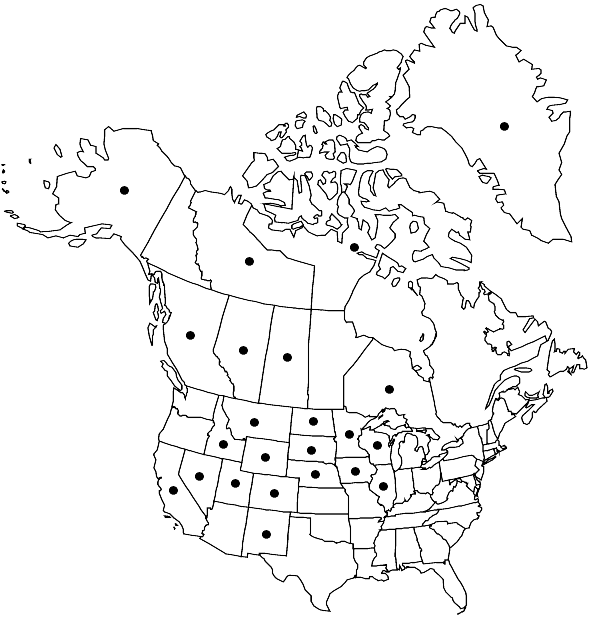Difference between revisions of "Grimmia plagiopodia"
Sp. Musc. Frond., 78, plate 15, figs. 6–13. 1801,.
imported>Volume Importer |
RevisionBot (talk | contribs) m (Bot: Adding category Revised Since Print) |
||
| Line 54: | Line 54: | ||
}}<!-- | }}<!-- | ||
| − | -->[[Category:Treatment]][[Category:Grimmia subg. Grimmia]] | + | --> |
| + | |||
| + | [[Category:Treatment]] | ||
| + | [[Category:Grimmia subg. Grimmia]] | ||
| + | [[Category:Revised Since Print]] | ||
Latest revision as of 18:03, 30 April 2021
Plants in dense cushions to hoary tufts, dark green to brown. Stems 0.3–0.5(–1) cm. Leaves oblong-ovate, 1–1.7 × 0.4–0.8 mm, concave-keeled, awn 0.3–1 mm; basal juxtacostal laminal cells quadrate to short-rectangular, straight, thin-walled; basal marginal laminal cells quadrate to short-rectangular, straight, thin-walled; medial laminal cells quadrate to short-rectangular, slightly sinuose, slightly thick-walled; distal laminal cells 1-stratose, marginal cells 1–2-stratose. Sexual condition gonioautoicous. Seta sigmoid, 0.2–0.3 mm. Capsule usually present, exothecial cells thin-walled, annulus absent, operculum mammillate, peristome present, fully developed, perforated and split in distal half.
Habitat: Exposed calcareous sandstone, limestone, occasionally concrete, and glacio-lacustrine silt
Elevation: low to high elevations (50-2400 m)
Distribution

Greenland, Alta., B.C., N.W.T., Nunavut, Ont., Sask., Alaska, Calif., Colo., Idaho, Ill., Iowa, Minn., Mont., Nebr., Nev., N.Mex., N.Dak., S.Dak., Utah, Wis., Wyo., South America, Eurasia, Pacific Islands (New Zealand), Antarctic.
Discussion
Grimmia plagiopodia has a widespread and continuous distribution on calcareous rock across the northern Great Plains, reaching as far east as Illinois. It is rare in eastern North America, with a disjunct site in southern Ontario. In the west it reaches into the mountains on limestone and basic sandstone deposits, but its continuous range does not extend west of a line from Utah to south-central British Columbia. There is a disjunct location near Carson City, Nevada and Lake Tahoe, California. In the Arctic it is known from a few scattered localities extending from northwestern Greenland and nearby Ellesmere Island to the North Slope of Alaska. Compared to G. anodon, G. plagiopodia tends to occupy more prairie-like sites and is typically found at lower elevations. Commonly fertile, it is recognized by its immersed, peristomate capsule on a sigmoid seta with fully-developed teeth that are perforated and split distally. Grimmia americana is similar but has a short, straight to arcuate seta and a large annulus. The other widespread species in the group, G. anodon, has an annulus and is gymnostomous.
Selected References
None.